I am so sorry, I realize I have been seriously lacking in the blog posts. I came home on Wednesday from an EXHAUSTING
Category: Thoughts & Ideas
Our Time in PA
We left GA last Saturday around 8pm, arrived in PA Sunday morning around 9am. Justus drove most of the way, and we made good time for hitting an accident in WV and sitting for about 45 minutes. The dogs traveled really well, which I was also pleased about. Sunday we relaxed, hung out, and got everything ready to start hunting on Monday morning.


We hunted pheasants Monday, Tuesday, and Wednesday, with Tuesday being a preserve hunt at Hopewell Pheasantry in Felton, PA, and Monday/Wednesday being public land hunts. Saw birds every day, and on Tuesday we managed to bring home 7 birds. Turned them into tacos which were delicious.
We duck hunted Wednesday (I slept in), Thursday, and Friday. In years past, the waterfowl hunting has been iffy, however this year it seemed to have actually picked up. Wednesday, Justus and my Pap killed 3 hen buffleheads. Thursday we didn’t bag anything, however if we wouldn’t have been interrupted, we could have shot a good number of geese. Friday we should have killed more, but came home with a nice drake mallard. Waterfowling is chilly, but I always enjoy it, especially when birds are flying and guns are going off.


When we weren’t hunting, we spent lots of time with family. We helped my dad build his new coop from the Urban Coop Company, colored with my grandma, partook in a cookie decorating contest with mom, and ate LOTS of great homemade food. All in all, it was a great vacation, minus the cold.






Why I Love Training Dogs
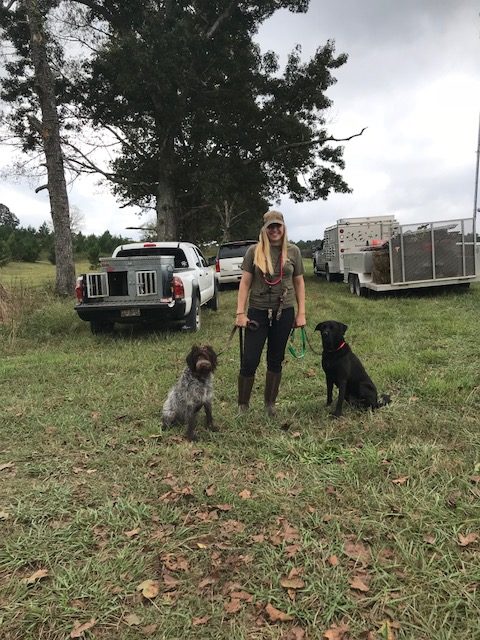
I am writing this post not as a ‘professional’ giving advice, for I am not a pro; I simply enjoy working with and training our own dogs. The first dog I ever trained myself was my mutt, Brantley. He has been a JOY to train, he learns quickly, and is extremely intelligent. He is also opinionated and will tell you when he doesn’t want to do something. Overall, he was an easy dog to train, and as my first, we had a huge learning curve. We were both learning together as I trained him from ground zero. He has turned into a fantastic hunting partner (my favorite) and pet. Don’t get me wrong, Brantley has his quirks (ie. he whines in the duck blind), but when you ask him to do something, he does it. I even had the pleasure of running him in a started HRC hunt test via UKC (I had him performance registered) where he received a ‘pass.’ He’s a great dog, my heart dog, and training him was a complete 180 from training Miss Willa.
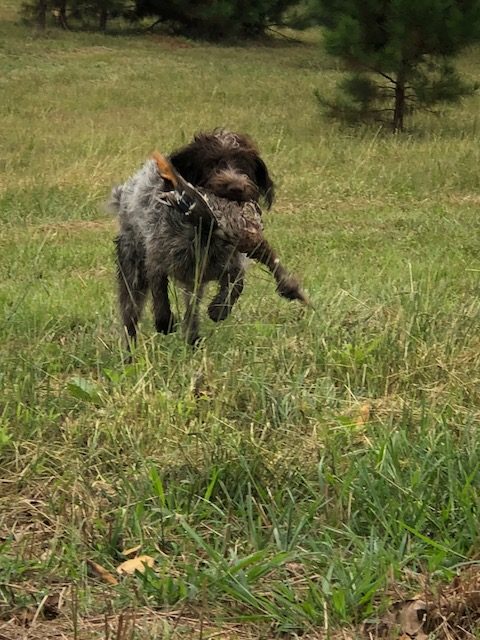
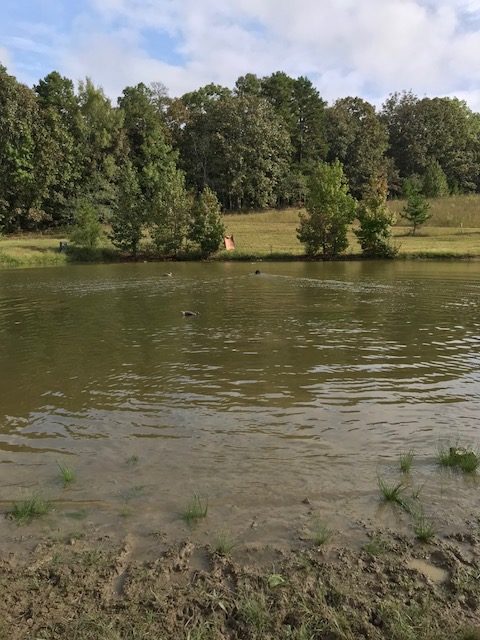
Willa joined our family in February 2018. She is a wirehaired pointing griffon (WPG/griff). She came to us from Chapel View WPG’s (Larry Fiske) in West Bend, WI. While we had some issues getting her registered (I would NEVER recommend this breeder to anyone), her personality has always been great, and without the technical difficulties she is an AWESOME dog.

Training Willa from the start was much different than training Brantley. Brantley was potty trained in 3 days as an 8 week old puppy. Willa took FOREVER to potty train. I’ve heard that females can be more difficult than males, however I think Brantley was also unnaturally quick to catch on. She still occasionally has accidents (almost 11 months old). Initial training of commands was also slower with Willa than Brantley. Brantley had such a drive to please and perform, he was retrieving short marks when he was just weeks old. Willa took her time when she was a puppy. Even with treats, she would lose interest quickly. She was quite goofy and dopey, completely different from Brantley (and our other lab, Timber).
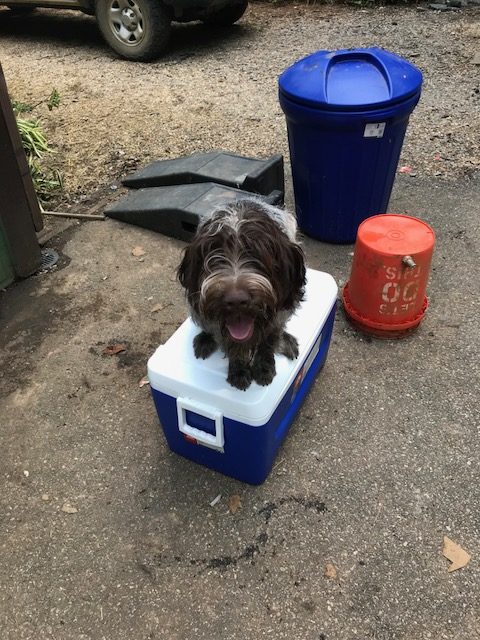
Thankfully, Willa passed out of the puppy stage and found her desire to hunt and work. She LOVES to be out in the field. We took her to retrieve at a pheasant throw in June of 2018 (6 months old) and she both pointed and retrieved her first pheasants. After that, I started her out on some gun dog basics (sit, stay, here, heel, place, whoa, etc.). I used the “Self Training the Hunting Retriever” by Freddy King series on Youtube as a platform for my training program. I had decided even before Willa arrived, that I was going to train her in a more professional and structured manner than how I trained Brantley. She has done very well with it. She force fetched herself. She is taking in new commands and information every single day. We attended some training days over the summer at local NAVHDA chapters, and she ran her Natural Ability (NA) test on 9/8 with a final score of 104 Prize III with high marks except in the tracking portion (my fault for not working her more with it). I was very proud of her. We are currently training to run in the UKC HRC started series. I had hoped to have her SHR (started hunting retriever) title before she turned 1, but she came into heat 10/3 (can’t run bitches in heat in HRC tests) so that won’t happen.

Lately, we have been continuing on the retriever drills, as well as keeping up with basic obedience. I do heeling drills and place commands and she does great with everything. For a while now, though, I have been having some issues teaching whistle sit at a distance. At my side, she’s great. When I try to stop her and get her to sit, she hesitates: she will stand but she refuses to sit down, it’s like I was blowing her mind. I couldn’t figure out the problem, so I gave it some time and we worked on things that she was good at and enjoyed. In doing so, we were working on off leash heeling and it hit me, I realized the problem with the whistle sit. When I had been blowing the whistle to have her sit, I had been doing it almost every time she got to my side. She thought that the command I was using for ‘sit’ meant ‘heel.’ I had taught her that! Silly me, I thought that I was the one teaching this dog, but she is also teaching me. She isn’t as intense as Brantley and Timber are, and she LISTENS instead of interpreting. If you tell her fetch, she’s going to fetch (something), and she thought that I was telling her to heel which is why she became so confused. Once I realized it, I used a new command for sit, and it took her about 3 tries before she realized that command meant sit. One step closer every day for both of us.


Working with animals, dogs especially, keeps me on my toes. I learn something new almost daily. While we absolutely have enough dogs (for a while anyway), I am excited for my next gun dog to work with and train, because I can keep bettering my own methods. I am also looking forward to where the future takes both Willa and Brantley, both dogs have such great potential, I’m hoping they have the opportunity to work together in some upland fields this fall.

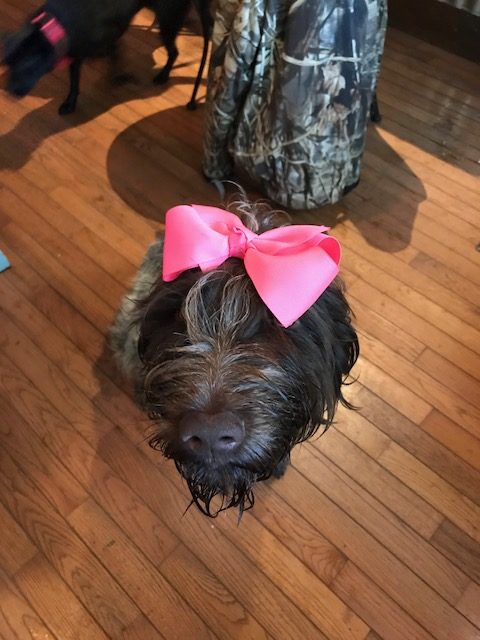
Feeling Like Fall
We have had our first 2 kindles of the 2018-2019 breeding season. One litter of 5 blues from Dallan x Queenie, and another litter of 4 blacks & 1 blue from Pirate x Sookie, total kit count is 10 so far for the season, which I am happy about. Our first show is this weekend, I will not be in attendance but my fabulous mate Linda from Tale of Tails will be taking Pirate, Dallan, Maggie, & DF02 my remaining Dallan x Faith jr doe. Looking forward to seeing how they do. We have another show 10/13 in Perry that I will hopefully be able to take 5 or 6 of my rabbits to.
Other news, the meat chickens have grown EXPONENTIALLY, they’ll be butchered 11/4. Hogs go to the processor 11/5, so November will be a busy month for us. I’m quite looking forward to it.
Haven’t killed any deer yet, I haven’t even been hunting. Shame on me.
I can’t believe it’s October already. The days are just flying by. I am enjoying the slightly cooler weather though.
Enjoy this picture of our new mouser Georgie. 🙂
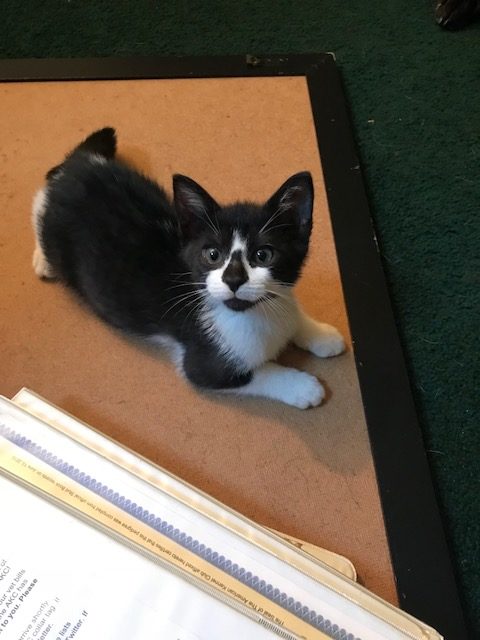
Some Work Outside
Yesterday my friend Nicole and I took our griffs Reign & Willa to a training day with the Chattahoochee NAVDHA club. Willa (and Reign) have their NAVHDA Natural Ability (NA) tests coming up on September 8, so we were getting in one last good day of training on some live birds with the pros! We had a great day, and were very pleased with how both of our dogs performed. Looking forward to the test! While we were there, I met the cutest little griff puppy (see below), Jax. He is 11 weeks old, and reminded me how cute griff puppies are.
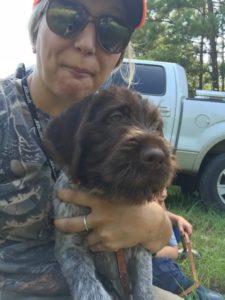
Today I worked outside. I woke up, brewed some hot tea, ate a bowl of granola, and got to work. I had a tentative list of things that I wanted to accomplish, and I’m proud to say that I got every one of them done. I set up some cinder blocks around one side of the rabbitry and filled them with my high quality bunny compost. In the spring I’m going to likely plant some sweet potato vines in them to feed the buns with, but today I planted garlic. I’m hoping I got the cloves in the ground early enough so that they weather the winter and produce next year. I also aerated and re-planted my large wooden planter. I just tossed in some greens (chard, kale, lettuce, etc.) to see if anything would come up before it got too cold. In an effort to keep the chooks out of the bed this time, I hung CDs. This worked with my garden last summer, we will see if it works this year.
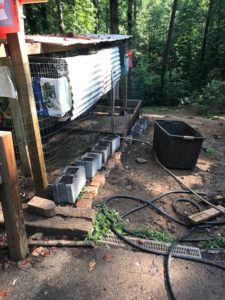
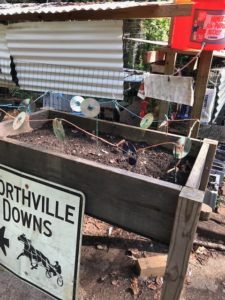
Other news, we found the cat. Unfortunately she had passed, we believe our neighbors dogs got her. I have no proof, but we will definitely be battening down the hatches around here.
Better news, Bertha managed to hatch 7 chicks! All of them are dark grey/black except for one (I’m hoping it’s one of Merle’s). There were two other eggs left that she had stopped incubating to take care of the other chicks, so we have them in the incubator. One had pipped and the other hadn’t begun to hatch yet, but now both chicks are out of their eggs in the incubator. One had some shell stuck to it, so I’m not very confident about its survival, but we will see.
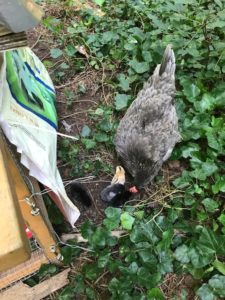
Oh also, Justus is working in the taxidermy shop (finally!!) and the dogs are the happiest about it. They’re his biggest fans. HA!
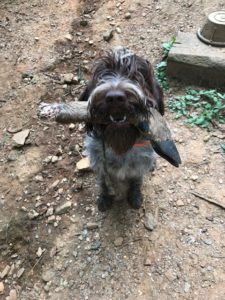
Death on the Homestead
Animals die. People die. Everything dies. That’s life. There can be NO life without death. Fact. Today’s society finds death particularly morbid and revolting, and therefore, talking about it can be taboo or uncomfortable. People like to think that because I kill my own animals for consumption, that this somehow makes me immune to the pain and sadness that surrounds death. This is simply not the case, nor should it ever be for any human being, regardless of being a farmer or not. Of course it saddens me to take a chicken from its pen, or a rabbit from its cage, knowing it won’t return. It saddens me knowing that I have nourished and cared for and loved these animals, often times from day one. Of course we go into it all knowing what end they will meet, but that doesn’t make it any easier. I feel the utmost respect and gratefulness for these animals, and it helps me knowing that they led a good, humane, healthful life. In their death, they provide sustenance for our family, and that too makes everything worth it.
There is other death too, however, on the homestead. The unexpected kind. Again, many people like to assume that we handle this kind of death like we would on slaughter day. This is simply not true. We (at least I) grieve. We may not grieve outwardly, but inwardly we reconsider everything that led up to the unexpected passing. What could I have done differently? Was there a way to save them? What signs did I miss? This sort of death, for me, is the most difficult. Slaughter animals, you know they will ultimately die, but an animal that is taken off by a predator, or worse, that I have to put down, is about the hardest thing I deal with.
We lost our rooster Merle this weekend. He and Pepper (head rooster) got into some sort of altercation, and we found him bloodied and limping on Saturday morning. I isolated him, cleaned his wounds, and gave him some scrambled eggs. He continued to rest. Unfortunately, while I did dress his wounds with SWAT, he succumbed to flies around his vent, and we had to put him down. It hurts me, thinking that I could and should have done something more for him. It hurt me, to take him from his cage, hold him, talk to him sweetly, and then take his life. We buried him, he has a headstone, and most importantly, he is no longer suffering.
I have dealt with many unplanned deaths, especially since I began homesteading. There was the pet rabbit ‘Creature,’ while I was still in SC, who ate English Ivy and I had to put out of her misery (bawled all night). There was Shirley Temple, one of my original 4 hens, who was badly attacked by my roommate’s dog. Blueberry, my first homebred Silver Fox who succumbed to heat stroke. Django our old rooster and his fly strike. The night that the possum killed all of our ducks. Death happens. Being a farmer doesn’t make it any easier.
The most important thing you can have to help you cope with death of any type is someone who supports you. Someone who can help you dig the hole, who will stand by you as you cry, and who will grieve along side of you. Death is not an easy encounter, it is best to have someone to lean on through the grief.
It is also important to remember that with death comes life. One cannot dwell on an unexpected death. Take time to grieve, and then move forward. There is no sense in regressing into a state of sadness for long periods, especially over something that can’t be changed.
The Farm Dress
Why? Why wear a dress? It’s not the 19th century any longer, pants are acceptable. I just prefer a dress. They’re much more flowy and breathable, which is especially important during summers in the south. They make using the bathroom (sometimes in the front yard) a breeze! Plus, a dress is simply one piece of fabric, no need to match shorts with a shirt.
The winter is much less conducive to dress wearing, so you’ll see me in them a lot less when the weather cools off. As far as warm weather farming goes, I’m always in a dress. I wear them to butcher, to feed animals, to do chores, to chop wood and clear brush, the list goes on. The only mistake I have found while wearing a dress during farming: don’t groom rabbits in a black dress.
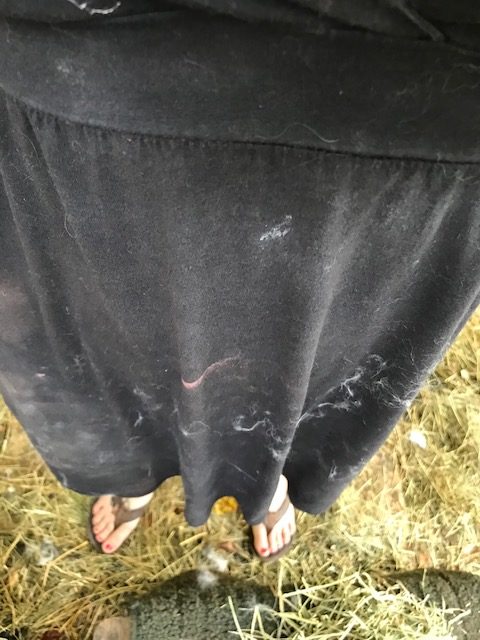
A Productive Weekend
Saturday I went to a dog training event with my friend Nicole (we both took our Griffs). That took up the majority of my day besides taking care of another friend, Shari’s, farm.
Sunday was my day. It was lovely outside, upper 70s with a slight breeze. I went to the barn to brush and spend some time with Picasso, then came home and got to work. I butchered six of my 12-week old growouts. I spared the other 6 because the yellow jackets were getting nasty. Then I made some butter and started two batches of dilly beans – one is being lacto-fermented and the other is in the fridge for a ‘refrigerator pickle.’ I also had my first attempt at making cheese. I’ll do a separate post about that. It’s currently curing right now, we shall see how it turns out. Both the butter & the cheese are raw (found a great source even though in GA it’s ‘pet consumption only’). I also tried to make yogurt, but that was an epic FAIL!
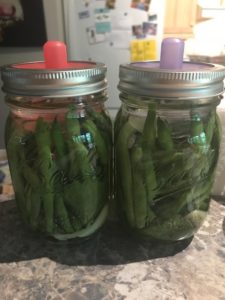
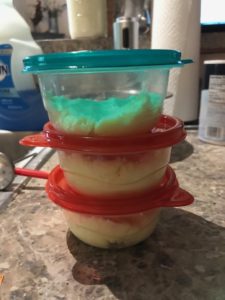
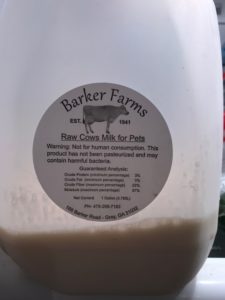
Other news? I harvested my first shiitakes off of the mushroom log that mom & Johnny got me. Rabbit prosciutto is still in the works and doing well. The geese are doing well, growing like weeds. The Polish eggs that remain in the incubator (4 or 5) go into lockdown this coming Friday (7/27), I hope at least a couple hatch. I am enjoying this time that I’m having at home. Being very productive.

Quick Update
What’s new? Not much. Got three more geese (Toulouse) to be friends with Talbot (Chinese). I’m afraid there must be a language barrier between them because Talbot has not yet taken to them. We will see if he gets better. He was a big boy and walked the whole way down & back to the creek today. He loves swimming in the creek. I can’t wait until he’s big enough to free range the farm all day (and still unsure if he’s actually a ‘he’).
FINALLY weaned my last 2017-2018 breeding season litter: Dallan x Faith. There’s six of them, three blues and three blacks. Hoping for some promising kits. My other set of grow outs are nearing the 12 week mark, and I’ll be culling those who aren’t up to par. I’m hoping I get at least one nice doe out of that whole group.
Pigs are doing well. Eating everything. Same with the chickens. I guess Elsa and Francis must not feel like going broody this year, as they’re usually sitting by now. Oh well. We have 11 Polish eggs in the incubator right now, due 7/31. Me and my auction buys, sheesh.
I guess that’s about all for now. I’ll pick back up in my series this week when I’ve got some time to write.
What Are You Thinking? Part 2
Vegetarians and vegans would have you believe that a meat-free diet is a sustainable venture; one without fault or death. This simply is not the case. Agriculture, when performed on the conventional, industrial scale, is carnivorous. It quite absolutely requires death and destruction. It has the power to consume any and all portions of an ecosystem. CAFOs (confined animal feeding operations) are not the only inhumane portion of industrial agriculture; monocropping can be argued to be just as detrimental to an existing ecosystem.
In order to grow the vast amounts of corn, wheat, and soy that make up around 75-90% of a vegetarian’s diet, the land must first be made suitable for agriculture. If you recall in my first post, there are only a very few locations across the globe that can truly, sustainably support large scale agriculture; most areas where conventional ag is performed are not within these specific locations. Farmers who produce such large amounts of cash crops often have no regard for the potential sustainability of their operation, clearing out trees and piping in water to support their crops. They also pour on the fertilizer, often provided by CAFOs, which eventually runs off into surface water systems such as lakes, creeks, and rivers. Instead of working to build and sustain healthy topsoil with beneficial microorganisms, the topsoil is degraded, even further by pesticides, herbicides, and erosion.
Once the land is cleared, planted, and fertilized, and the crops begin to grow, the cycle of death is not yet complete. The act of harvesting these crops kills many animals, insects, and native plants. Small animals and insects who have been able to tough out a life among the crops while they grew are now displaced, crushed, or eviscerated by the harvesting equipment. Even larger animals such as hogs, deer, and coyotes have been known to be casualties of crop harvesting. Most vegetarians do not consider the inadvertent death which is a part of their “sustainable” lifestyle.
CAFOs are the other form of carnivorous conventional agriculture. This one is a bit more obvious, animals are raised and slaughtered for their flesh. Most CAFOs display a complete disregard for their quarry’s natural lifestyle, and instead opt for the most economical and least time consuming options. Animals, whether poultry, pigs, or cattle, are crammed into tight quarters, far exceeding what their housing can comfortably accommodate. They are fed, surprise, conventionally farmed feeds typically made up of corn, wheat, and soy, coupled with “waste parts” from other CAFOs (chicken parts, pig parts, cow parts, etc.). Cows were designed to consume grass, not feed, leading to ulcers and other digestive issues. Pigs were made for rooting, foraging, and scavenging. Because they are not afforded a typical lifestyle with natural behaviors, cannibalism between pigs often occurs under CAFO conditions. Chickens are packed so tightly and grow so fast, they often are unable to stand and succumb to their own weight. Disease runs rampant under these conditions, as well as injury and death prior to slaughter.
In order to create a sustainable agricultural system, we need to go beyond conventional industrial ag. We need to begin respecting the land and the animals. We need to begin creating ecosystems, partnering animals with crops in a rotational system that benefits those involved. Joel Salatin’s system on his Polyface Farms in Virginia is one of the best and most sustainable systems for agriculture in today’s day in age. He achieves high production rates while respecting and even improving the land that he farms. He makes use of cattle and chickens to fertilize his pastures. He raises rabbits on pasture and pigs in a fashion that allows them to root and also aerate the soil. He also does not succumb to conventional practices and does not monocrop or raise today’s corn, wheat, and soy crops. In doing so, he has created a healthy and sustainable system of agriculture on his farm that is improving his soil and producing food to feed others. It is easy to say that Joel’s form of ag is far more sustainable, and far less carnivorous than other types of industrial ag: he is working with his ecosystems to build and sustain them.
If we are to end this carniverious cycle, or at least decrease the destruction, one of the biggest steps we can take is to avoid monoculture crops and CAFO meats. If we turned in our corn, wheat, and soy products in favor of farmers market veggies and atypical grasses and grains (barley, sorghum, buckwheat), we are taking a step in the right direction. I am not saying that vegetarianism is wrong, however their ideas are seriously misconstrued. They believe that a no-meat system is the only system of dieting that prevents death. This is incorrect. Besides the plants that are killed, the natural ecosystems of the areas that are farmed also suffer. I would whole heartedly support a vegetarian who only buys their produce from a local farmer or through farmers markets, however I fear this is not what most vegetarians are willing to do. Unless one is gung-ho about canning, dehydrating, and other forms of food preservation, the winters often under-produce the necessary nutrients required for survival. This is why meat, which offers required protein amongst other vitamins and minerals, is beneficial in winter and less productive times.
Regardless of your diet, please continue to deeply consider what you are eating. I realize it is irrational to believe that everyone can consume a diet of local, non-industrial ag; even I myself do not currently eat that way. It is possible, however, for everyone to take an interest in what I’m saying: teach yourself, ask questions, and truly consider what you’re putting into your body and where it came from. If I can motivate even just one person to switch from store bought to farm fresh, local eggs or meat or produce, then I can say I have been successful in my endeavors.
Thanks for reading, I’m looking forward to putting together part 3!
